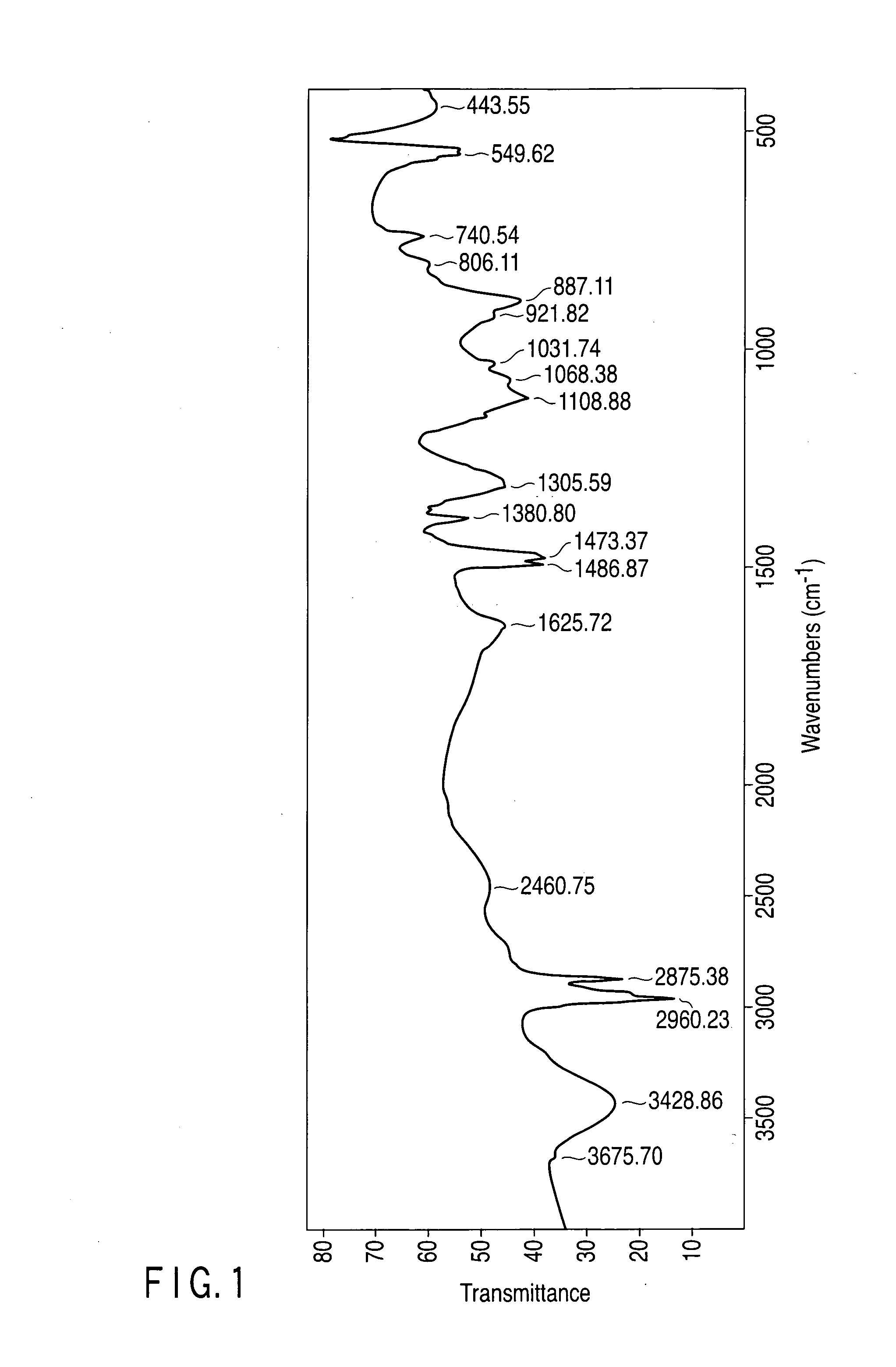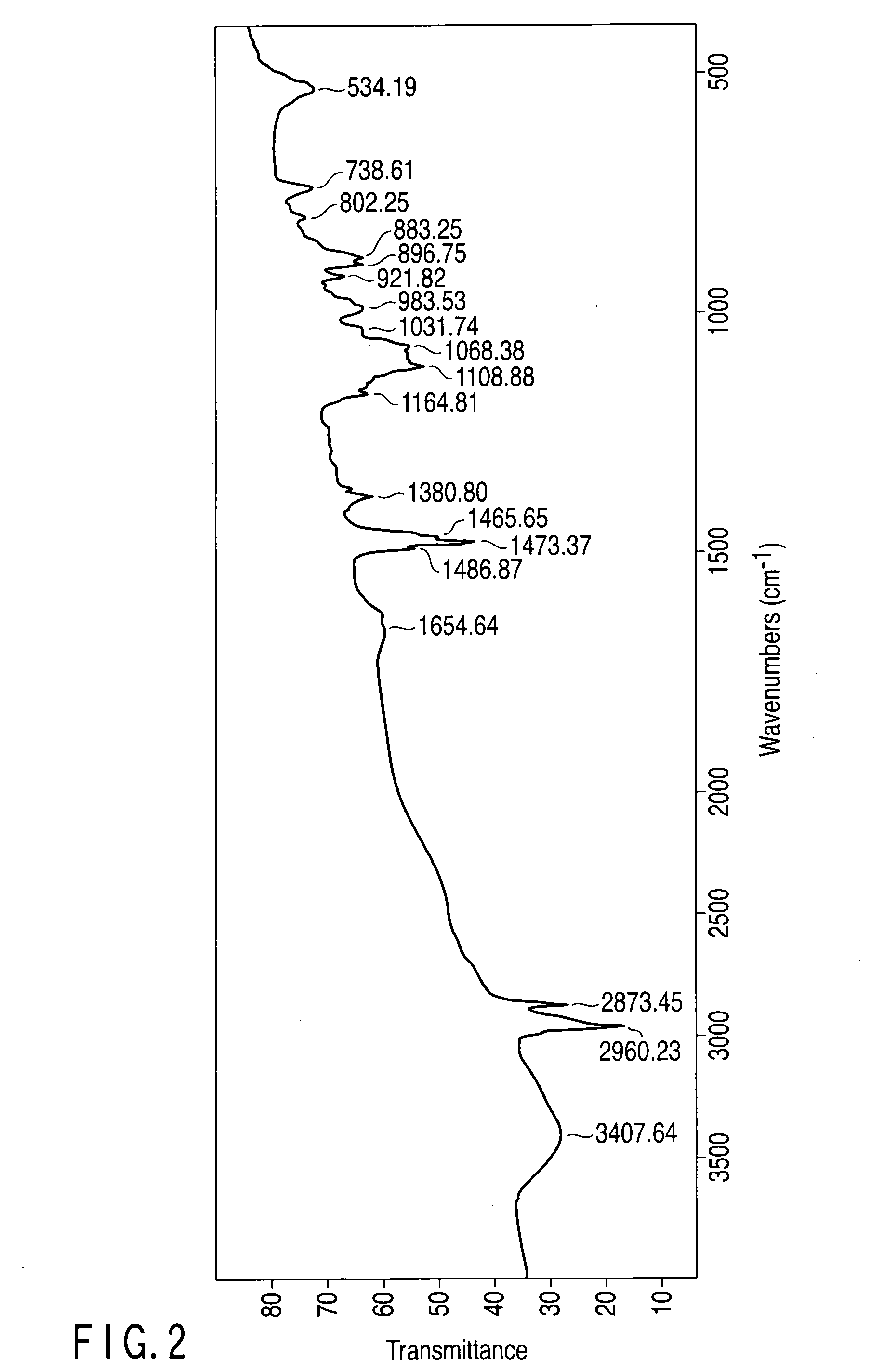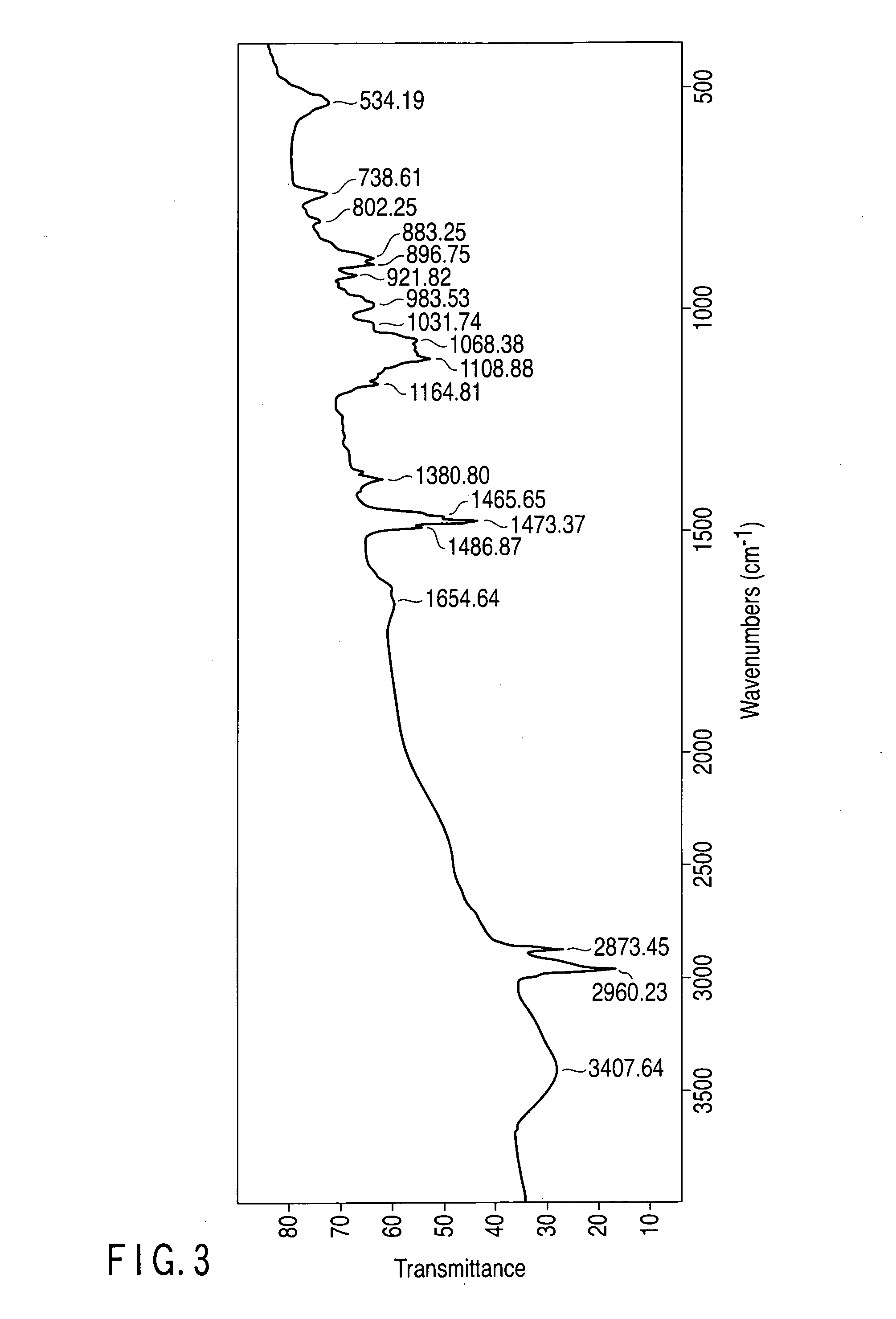Latent heat storage substance, clathrate hyrate or slurry thereof, method for producing clathrate hyrate or slurry thereof, and latent heat storage agent
a technology of clathrate hydrate and latent heat storage agent, which is applied in the field of clath, can solve the problems of increasing the possibility of clathrate hydrate being in contact with metal materials, increasing maintenance and control costs, and increasing the cost of metal materials. , to achieve the effect of promoting the corrosion of metal materials
- Summary
- Abstract
- Description
- Claims
- Application Information
AI Technical Summary
Benefits of technology
Problems solved by technology
Method used
Image
Examples
example 1
Neutralization Reaction Between tetra-n-butylammonium hydroxide and phosphoric acid
[0165]A neutralization reaction between tetra-n-butylammonium hydroxide and phosphoric acid was run to attempt a synthesis of a phosphate of tetra-n-butylammonium.
[0166]The phosphate of tetra-n-butylammonium includes three types, that is, tetra-n-butylammonium dihydrogen phosphate (TBA-H2PO4), di(tetra-n-butylammonium) hydrogen phosphate (TBA2-HPO4) and tri(tetra-n-butylammonium) phosphate (TBA3-PO4) depending on the types of phosphate ions to be bound with the tetra-n-butylammonium ion. In the present invention, a tetra-n-butylammonium ion is written as TBA.
[0167]The molar ratio of tetra-n-butylammonium hydroxide to phosphoric acid, both of which were raw materials, was adjusted to 1:1 in the case of producing TBA-H2PO4, 2:1 in the case of producing TBA2-HPO4 and 3:1 in the case of producing TBA3-PO4.
[0168]Also, the concentration of water was so adjusted that the amount of water was 30 moles to 1 mol...
example 2
Adjustment of the Percentage of a Hydrate of a tetra-n-butylammonium phosphate by pH Adjustment
[0186]The pH of the aqueous solution produced in Example 1 was changed by adding potassium hydroxide or phosphoric acid to examine the melting point by USC and also to examine a variation in the hydrates of tetra-n-butylammonium phosphate by IR analysis.
[0187](1) Increase in Each pH of the Aqueous Solutions 1 and 2
[0188]Though the aqueous solution 1 containing TBA-H2PO4 has a pH of 5, the pH was altered to 13 to prepare an aqueous solution 1A. Also, though the aqueous solution 2 containing TBA2-HPO4 has a pH of 10, the pH was altered to 13 to prepare an aqueous solution 2A. Each of the aqueous solutions 1A and 2A was subjected to DSC to measure the melting point of the hydrate, to find that it was 17° C. Each measured melting point almost corresponds to the melting point of a hydrate of TBA2-PO4.
[0189]Each of the aqueous solutions 1A and 2A was cooled with vigorous stirring to produce a hy...
example 3
Corrosion Test
[0206]A powder of TBA-H2PO4 obtained from tetra-n-butylammonium hydroxide in Example 1 was dissolved in water such that the amount of water was adjusted to 30 moles with respect to 1 mole of tetra-n-butylammonium in the aqueous solution. The obtained solution was diluted 2.5 times with water to obtain an aqueous solution. Then, the solution was adjusted to pH 9.5 and pH 10.5 by adding sodium hydroxide.
[0207]A metal material was subjected to a corrosion test using the resulting aqueous solution. Test materials of copper, carbon steel and SUS304 were dipped in the aqueous solution and kept at 50° C. under an open atmospheric pressure for one week.
[0208]As a result, almost no corrosion was observed on the surfaces of copper, carbon steel and SUS304 by the naked eyes in any case where the pHs of the solution were 9.5 and 10.5 respectively. Also, a reduction in weight was measured to detect the amount reduced by corrosion, thereby calculating the rate of corrosion. As a res...
PUM
 Login to View More
Login to View More Abstract
Description
Claims
Application Information
 Login to View More
Login to View More - R&D
- Intellectual Property
- Life Sciences
- Materials
- Tech Scout
- Unparalleled Data Quality
- Higher Quality Content
- 60% Fewer Hallucinations
Browse by: Latest US Patents, China's latest patents, Technical Efficacy Thesaurus, Application Domain, Technology Topic, Popular Technical Reports.
© 2025 PatSnap. All rights reserved.Legal|Privacy policy|Modern Slavery Act Transparency Statement|Sitemap|About US| Contact US: help@patsnap.com



